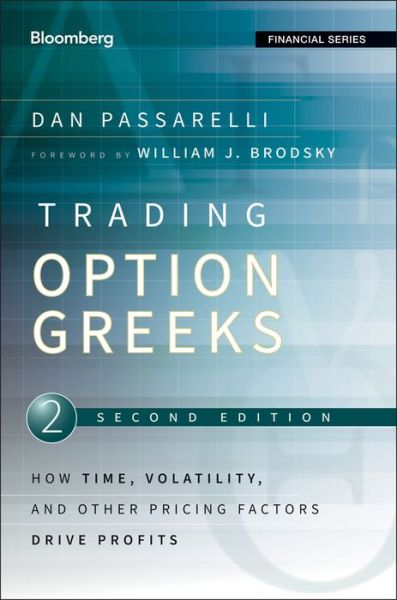Trading Option Greeks: How Time, Volatility, and Other Pricing Factors Drive Profits ebook
Par warren sean le samedi, février 6 2016, 22:52 - Lien permanent
Trading Option Greeks: How Time, Volatility, and Other Pricing Factors Drive Profits. Dan Passarelli
Trading.Option.Greeks.How.Time.Volatility.and.Other.Pricing.Factors.Drive.Profits.pdf
ISBN: 9781118133163 | 368 pages | 10 Mb

Trading Option Greeks: How Time, Volatility, and Other Pricing Factors Drive Profits Dan Passarelli
Publisher: Wiley
There are times when speculative action can change the balance (high activity in one direction because of liquidation or delta hedging or whatever). Keith did make a little factor of 42 error on tanker capacity. Jul 30, 2013 - First, it is important to understand the basic assumptions of the Black-Scholes model, which I've taken from the excellent book, “Options, Futures and Other Derivatives”, by John Hull: The underlying asset price follows a . Here is a graph depicting the theta decay curve for OTM 10 delta SPX options with theoretical option prices starting at 98 DTE. At 35 DTE the Given this, if you sell some relatively elevated volatility then you can make a lot of money in a very short time if the volatility comes out. Feb 18, 2009 - If some traders have pushed a price irrationally high, others will go 'short' making their profits when the price readjusts. This class, in keeping with the Black-Scholes assumptions above, takes a constant volatility (sigma) and rate (r) as input along with the underlying's price (S), the option's strike (K) and the option's time to maturity (t). Notice how much steeper the curve is for both calls and puts from 98 DTE to around 35 DTE. The BlackScholesCalculator class. And, as you point out, expectations can drive pricing more then some economist's cross plot. Mar 8, 2014 - Obviously, this is assuming all other factors are constant.
